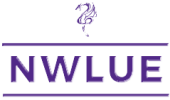School & Park Projects
A Principal Planner, in the context of school and park projects, operates at the intersection of community planning, educational needs, recreational demands, environmental concerns, and urban design. Their role ensures that these critical public facilities are designed and located in ways that best serve the needs of the community while adhering to regulatory requirements.
Detailed Layout of What a Principal Planner Does When Working on School and Park Projects:
Pre-Application Phase:
- Consultation: Engage with school district officials, park and recreation departments, landscape architects, and other stakeholders to understand the proposed project’s scope and needs.
- Site Analysis: Assess potential locations for schools and parks, considering factors such as access, neighborhood demographics, existing facilities, and environmental constraints.
- Feasibility Studies: Evaluate the viability of proposed projects in terms of land use, transportation, infrastructure, environmental sustainability, and community needs.
Application Review:
- Documentation Review: Ensure all necessary materials, like site plans, environmental assessments, and design proposals, are submitted and complete.
- Coordinate Technical Reviews: Engage specialists from traffic, engineering, environmental departments, and more to provide insights on the application.
- Public Notification: Disseminate information about the proposed project to the community, especially those directly impacted, for feedback and awareness.
Analysis & Evaluation:
- Land Use & Zoning: Ensure the proposed project aligns with land use designations and zoning regulations.
- Environmental Review: Determine potential environmental impacts, especially for parks that might be located in sensitive ecological areas.
- Access & Safety: Particularly for schools, assess safe routes for students, parking, drop-off zones, and public transportation accessibility.
- Recreational Needs Assessment: For parks, understand the community’s recreational demands, such as sports facilities, playgrounds, green spaces, etc.
Public Engagement:
- Community Meetings: Organize sessions to present proposals and gather community input.
- Stakeholder Collaboration: Engage with NGOs, parent-teacher associations, environmental groups, and other stakeholders to gather diverse perspectives.
- Public Hearings: Present before planning commissions or other governing bodies, incorporating feedback from the public and stakeholders.
Recommendation & Decision Making:
- Prepare Reports: Draft comprehensive staff reports that detail findings, analysis, and recommendations for the governing body’s consideration.
- Conditions of Approval: If a project receives the green light, set out specific conditions that must be met, ensuring alignment with regulations and community needs.
Post-Approval & Implementation:
- Oversee Compliance: Monitor the development phase to ensure adherence to approved plans and any conditions set forth.
- Coordination: Collaborate with construction teams, school districts, park services, and other entities for smooth project execution.
- Final Sign-off: Participate in final inspections, ensuring that the projects match the approved plans and serve the community’s intended purpose.
Continuous Improvement & Professional Development:
- Policy Updates: Based on experiences and changing community needs, suggest changes to local planning policies related to school and park projects.
- Professional Growth: Attend seminars, workshops, and conferences related to educational and recreational facility planning to stay updated.
By ensuring that schools and parks are thoughtfully planned, designed, and executed, Principal Planners play a pivotal role in enhancing the quality of life in communities. Their contributions directly impact the educational and recreational experiences of countless individuals.
